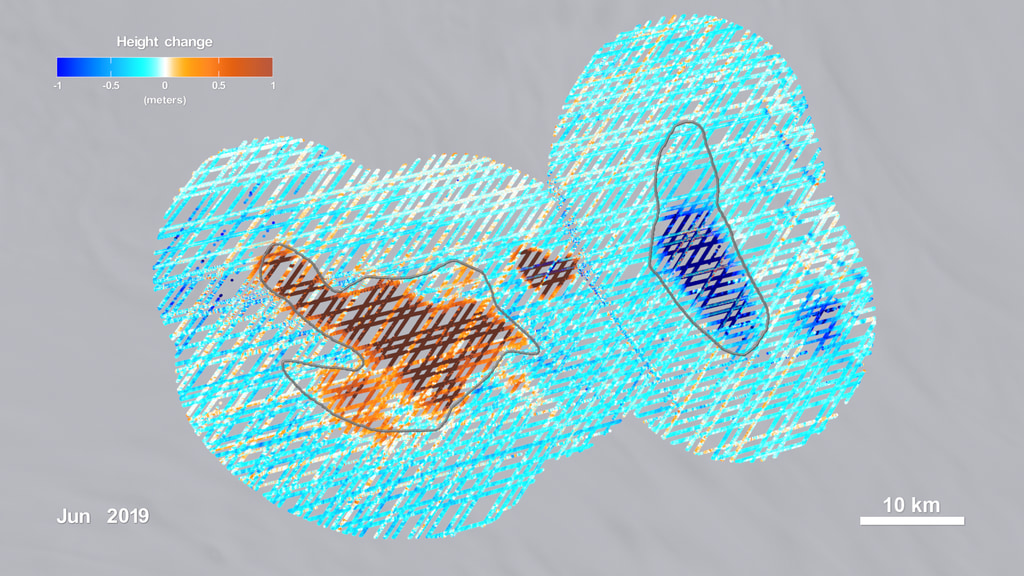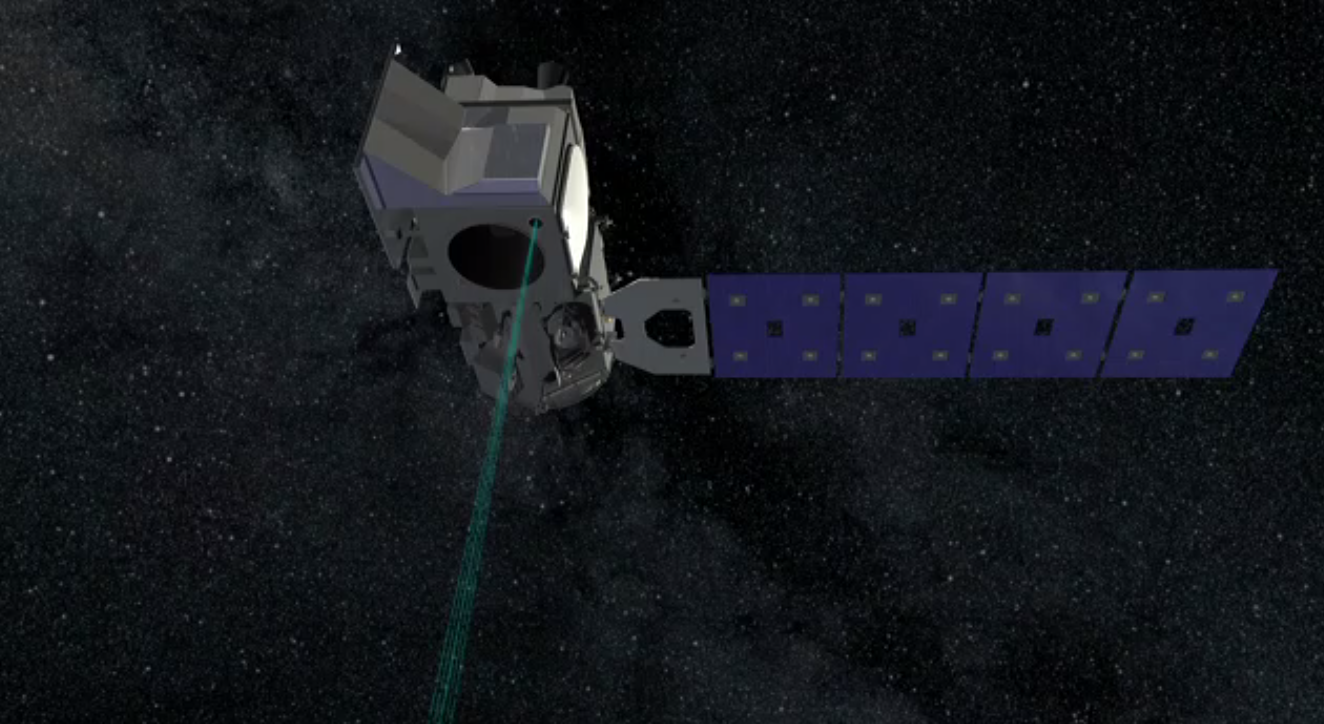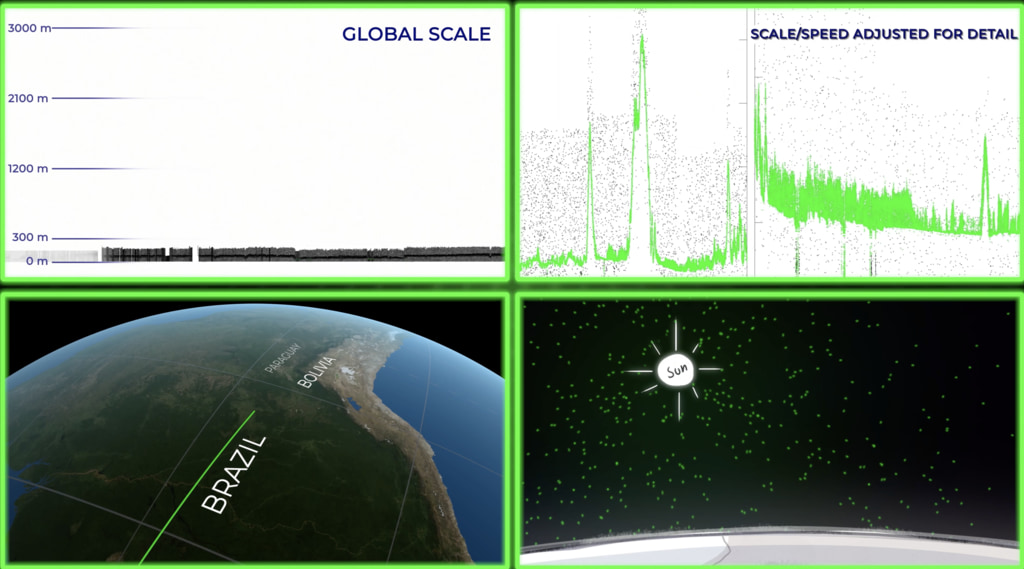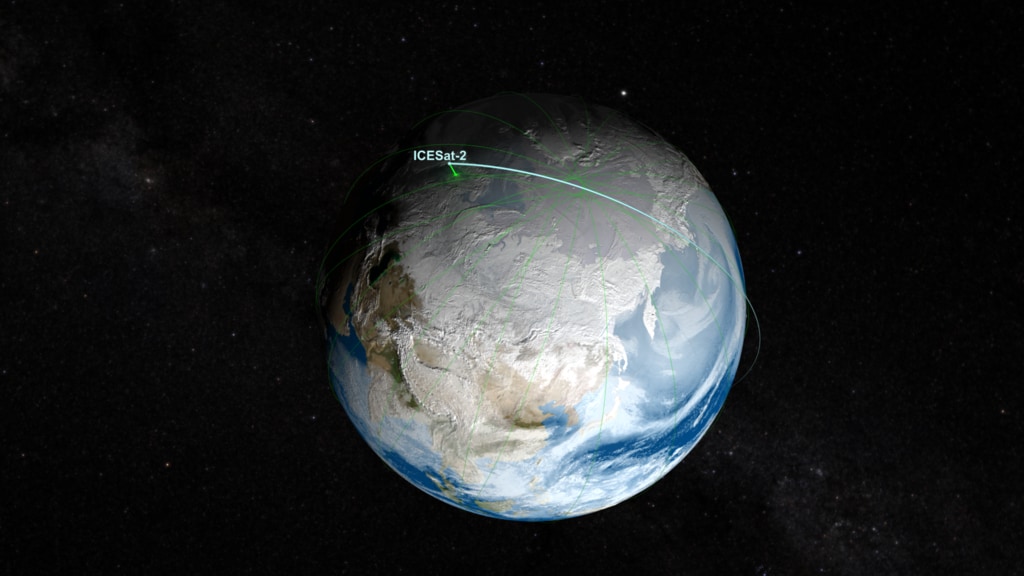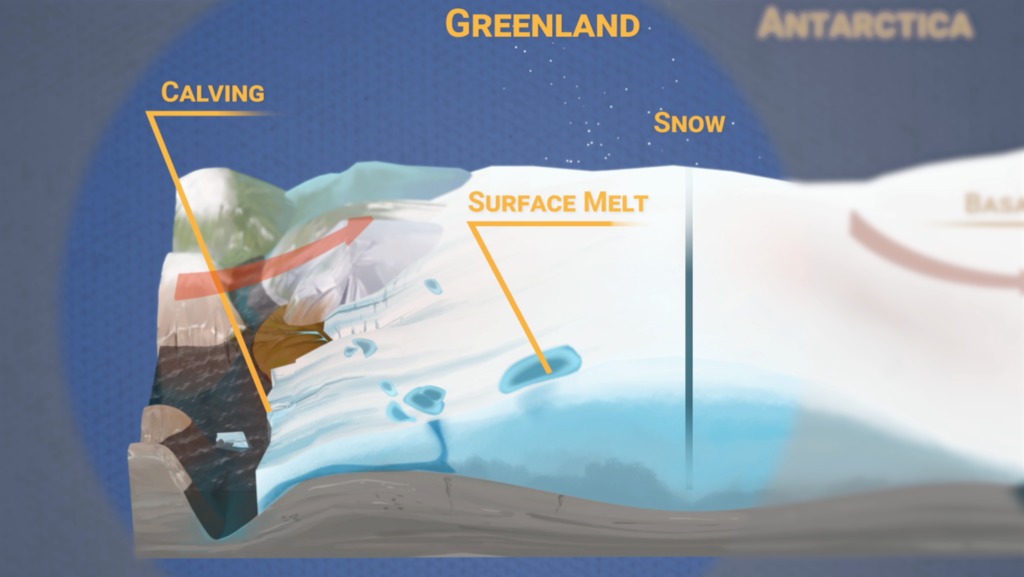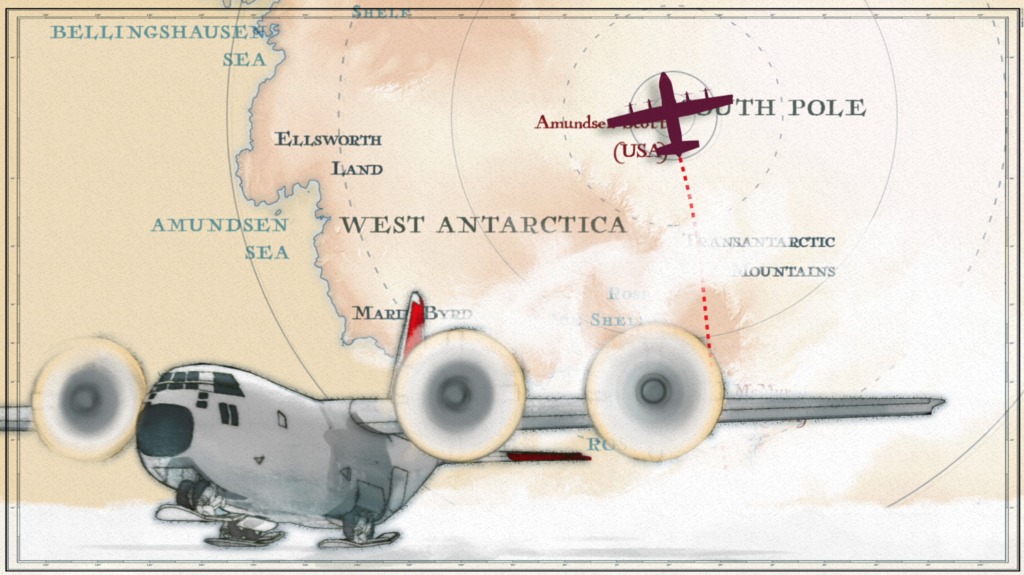ICESat-2 Orbit
ICESat-2 orbiting Earth: starting with global view building up ground track, then riding the satellite view, then back to a global view with full ground track
ICESat-2 is a spacecraft designed to accurately measure land and ice elevations on Earth. By comparing observations from different times, scientists will be able to study changes in elevations. ICESat-2 will be in a polar orbit which will provide high coverage near the poles where ice elevations are changing relatively quickly. This visualization shows ICESat-2's polar orbit from afar, then closer up. As we get close to the satellite, the 3 pairs of ICESat-2's ATLAS lidar laser beams begin to resolve. A ground track shows ICESat-2's global coverage which repeats about once every 90 days.
The ATLAS lidar on ICESat-2 uses 3 pairs of laser beams to measure the earth’s elevation and elevation change. As a global mission, ICESat-2 will collect data over the entire globe, however the ATLAS instrument is optimized to measure land ice and sea ice elevation in the polar regions.
For more information on ICESat-2 click here.
ICESat-2 orbit with ground track (short version)
Credits
Please give credit for this item to:
NASA's Scientific Visualization Studio
-
Visualizer
-
Greg Shirah
(NASA/GSFC)
-
Greg Shirah
(NASA/GSFC)
-
Technical support
- Laurence Schuler (ADNET Systems, Inc.)
- Ian Jones (ADNET Systems, Inc.)
-
Producer
- Ryan Fitzgibbons (USRA)
-
Scientist
- Thorsten Markus (NASA/GSFC)
-
Data provider
- Timothy Rebold (Emergent Space Technologies LLC)
Series
This page can be found in the following series:Datasets used
-
BMNG (Blue Marble: Next Generation) [Terra and Aqua: MODIS]
ID: 508Credit: The Blue Marble data is courtesy of Reto Stockli (NASA/GSFC).
This dataset can be found at: http://earthobservatory.nasa.gov/Newsroom/BlueMarble/
See all pages that use this dataset -
Tycho Catalogue (Tycho 2 Catalogue) [Hipparcos: Telescope]
ID: 550This dataset can be found at: http://archive.eso.org/ASTROM/
See all pages that use this dataset -
GEOS Atmospheric Model
ID: 665 -
STK Ephemeris [ICESat-2]
ID: 984
Note: While we identify the data sets used on this page, we do not store any further details, nor the data sets themselves on our site.
Release date
This page was originally published on Friday, November 3, 2017.
This page was last updated on Wednesday, May 14, 2025 at 12:06 AM EDT.
